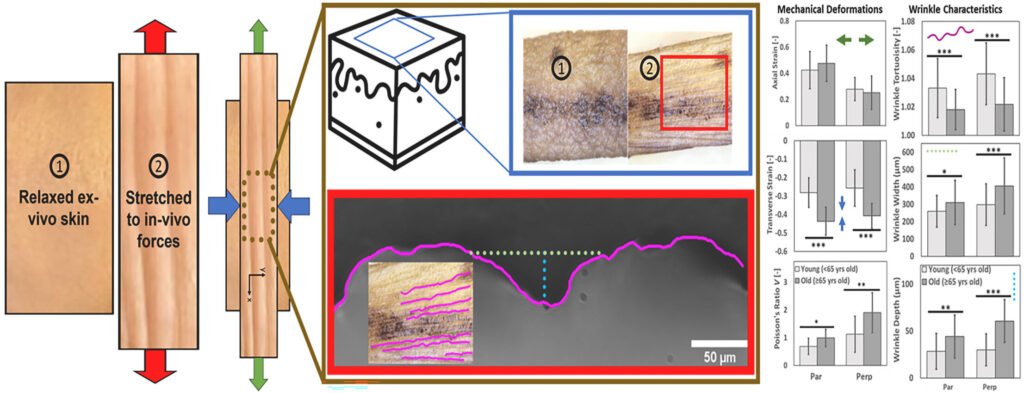Aging skin is a natural part of life, and with it comes the formation of wrinkles. Scientists at Binghamton University, State University of New York, have conducted research that sheds light on how wrinkles form as our skin ages.
The team, led by Associate Professor of Biomedical Engineering, Guy German, studied human skin samples and discovered that as we age, our skin becomes more prone to wrinkles. This is due to the skin stretching in one direction and contracting in another, causing it to buckle. Just like your favorite hoodie that stretches out in certain areas over time, your skin undergoes a similar process.
German emphasized that this research provides concrete evidence of the physical mechanism behind aging skin. Previous theories attributed wrinkle formation to factors like genetics, pathology, and sun damage. However, this study is the first to experimentally validate the changes in skin structure and mechanical properties that occur with aging.
Using a low-force tensometer, the research team stretched small strips of skin from individuals ranging from 16 to 91 years old. They found that as skin is stretched in one direction, it contracts in the opposite direction. This contraction becomes more pronounced with age, leading to the development of wrinkles.
Skin behaves similarly to Silly Putty when stretched—it shrinks in the direction perpendicular to the stretch. As we age, this contraction increases, eventually causing the skin to buckle and form wrinkles. German explained that the mechanical properties of skin change over time, leading to increased lateral stretching and wrinkle formation.
It’s important to note that environmental factors, such as sun exposure, can accelerate this aging process. Spending prolonged periods in the sun can have the same effect on skin as natural aging, leading to premature wrinkles. German advised using sunscreen to protect the skin from harmful UV rays and reduce the risk of accelerated aging.
The research paper, titled “Elucidating the Mechanistic Process of Age-Induced Human Skin Wrinkling,” was published in the Journal of the Mechanical Behavior of Biomedical Materials. This study represents a significant step towards understanding the complex process of skin aging and wrinkle formation.
As we continue to unravel the mysteries of aging and skin health, research like this provides valuable insights that can inform skincare practices and product development. By understanding the underlying mechanisms of wrinkle formation, we can better address the signs of aging and maintain healthy, youthful skin for longer.


